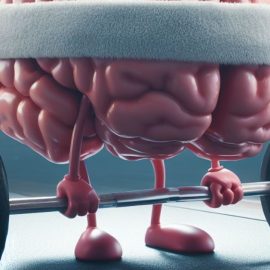
What are the consequences of the “American dream” narrative? What’s the truth about the gold standard?
Economist Robert J. Shiller writes that narratives are extraordinarily powerful because they help us make sense of the world. By organizing random events and observations into stories with clear narrative arcs, we come to understand our world, how it came to be, and our place within it.
Keep reading to understand how narratives work and to learn about four recurring economic narratives.
Economic Narratives
To help explain economic narratives, Shiller points out that we create narratives to describe the natural world. As winter approaches in temperate climates, we observe that the trees shed their leaves, many plants go dormant, the landscape becomes barren, and temperatures drop. Based on these observations, we form a narrative that describes winter as a period of rest and reflection for nature. It’s a time when the Earth appears asleep, conserving energy and resources. This narrative directly impacts our beliefs and behavior—we mirror nature’s resting period, leading to cultural traditions like winter holidays and celebrations that emphasize coziness, reflection, and the expectation of renewal in the future.
(Shortform note: Some authors have written that myths are the foundation of all human physical and intellectual pursuits, be they religious, economic, social, or cultural because these myths tell us who we are and what destinies we’re here to fulfill. In The Hero With a Thousand Faces, Joseph Campbell explores the power of myth and storytelling, from the ancient world to modern times, spanning every human culture across the world. All groups, and indeed, all individuals, writes Campbell, make sense of the world and grapple with their experiences by telling stories.)
Economic Narratives Give Meaning to Economic Events
Following this principle, we use economic narratives to discern meaning in economic events. An example of this is how people interpret an economic event like a stock market crash. When a significant drop occurs in the stock market, people may construct economic narratives to explain the cause and potential consequences.
Some might attribute the crash to the overvaluation of stocks. They may argue that prices had risen to unsustainable levels due to speculative behavior and an overly optimistic outlook among financial managers in the period leading up to the crash. This narrative suggests that the crash was a necessary correction to realign prices with fundamentals.
Others might interpret the crash as a reflection of broader economic uncertainty. They could argue that factors such as geopolitical tensions, trade disputes, or a global health crisis had created a climate of uncertainty, leading investors to sell off their holdings.
Another narrative could focus on regulatory failures as the cause of the crash. This narrative might claim that lax oversight and inadequate regulation allowed risky financial practices to proliferate, leading to the eventual collapse. Conversely, some individuals might argue that the stock market crash was a result of too much regulation imposed on financial institutions. This narrative would suggest that stringent regulatory requirements and compliance costs had stifled economic growth and innovation. As a consequence, financial markets became less adaptable and resilient, making them more vulnerable to shocks.
These narratives not only help individuals make sense of the stock market crash but also influence their future investment decisions and economic behavior. They shape perceptions of the event, drive market sentiment, and impact market dynamics.
| Economic Narrative and Economic Myth It’s important to note that not all economic narratives are created equal, and they can sometimes distort the true meaning of events. Economic narratives that find their way into the popular discourse are often beset by myths and misconceptions that misinform rather than educate. For example, popular narratives about inflation often reinforce inaccuracies, such as that inflation is solely caused by excessive government spending and rising wages and that corporate profits aren’t a main driver. It’s crucial to keep in mind that narratives aren’t necessarily accurate and unbiased reflections of reality. Rather, they can be influenced by various factors, including personal biases, media sensationalism, and political agendas. That’s why it’s important to approach economic narratives critically and complement them with rigorous economic analysis and data-driven research. |
Economic Narratives Shape Economic Behavior
Shiller writes that narratives don’t just help us understand or describe economic events around us—they shape the economic behavior that produces those events. Understanding this dynamic, says Shiller, is crucial for both economists and policymakers. This understanding will enable them to better manage economic events—especially as new communication technology has revolutionized the way narratives spread, enabling them to disseminate more quickly and widely than ever before.
(Shortform note: While Shiller attributes great power to narrative in driving and shaping economic events, narratives aren’t always the dominant factor at play. Traditional economic theories and concepts, such as supply and demand, monetary policy, and fiscal stimulus, continue to be essential drivers of economic events. It may be more accurate to say that narratives are one of many influencing factors, rather than the sole or primary driver.)
Recurring Economic Narratives
With our understanding of the power and reach of economic narratives and the factors that facilitate their spread, we can now turn our attention to exploring some of the specific economic narratives that Shiller argues have recurred throughout American history.
These narratives tap into fundamental themes that have shaped our collective understanding of past economic events. Because of the staying power and communicability of these narratives of the past, they influenced how people perceived and reacted to subsequent economic events. This, in turn, means that the narratives themselves come to have a profound influence on future events.
Recurring Narrative #1: Financial Panics and Depressions
Shiller observes that the narratives surrounding what we now refer to as “recessions” or “depressions” have evolved over time.
In the 19th century and early 20th century, these economic downturns were labeled as “panics,” and the narrative that prevailed was one of fear and loss of confidence. This belief in a narrative of panic shaped what ordinary people and elected leaders saw as the appropriate response. They believed that only great figures, like financier J. P. Morgan, could restore order and quell the panic through single-handed confidence, influence, and decisiveness. This is why Morgan personally assembled a coalition of bankers and financiers to inject liquidity into the banking system during the Panic of 1907.
(Shortform note: Although the great financiers of Wall Street may have been saviors in 1907, it’s worth noting that they were the architects of disaster almost exactly one century later, during the 2008 financial crisis. In The Big Short, Michael Lewis writes that the big banks profited by bundling dubious mortgage loans into complex financial derivatives that they sold off to unwitting investors. In just a few years, these toxic financial products spread throughout the financial system, exposing both Wall Street and Main Street to catastrophic risk. Lewis writes that major players—including investment banks, ratings agencies, and insurance companies—were all culpable in this widespread fraud.)
Recurring Narrative #2: The American Dream
As Shiller notes, the narrative of the American Dream—the concept that America is a land of opportunity, where hard work can lead to the realization of one’s fullest potential without interference—is deeply ingrained in the national narrative.
In the United States, the prevailing belief is in a pure meritocracy, where an individual’s only limitation is their innate ability and the effort they’re willing to put in. This narrative of opportunity and meritocracy began to evolve in the 1930s, and advertisers and marketers soon seized upon it to promote their products as embodiments of the American dream. Everything, from savings accounts and automobiles to suburban homes and home appliances, was presented as either a tool to help individuals achieve the American dream or a status symbol signaling to others that they’d already achieved it.
Shiller writes that the narrative of the American dream has significant economic consequences. On one hand, it increases consumer demand. The belief that anyone can improve their economic standing through hard work motivates people to strive for better living standards, which fuels spending and economic growth. However, this narrative also has a downside, as it can drive people into debt. Many people feel a pressure to consume, often beyond their means, in pursuit of the American dream. This drive to keep up with societal expectations and realize their version of the dream can lead to financial strain and cumbersome personal debt.
| The Relationship Between Happiness and Wealth Shiller observes that compelling people to spend beyond their means or ostentatiously display symbols of their wealth is a negative byproduct of the American Dream. Not only can this lead to indebtedness and financial strain, as Shiller writes, it may not even deliver lasting emotional satisfaction. In The Happiness Hypothesis, Haidt writes that according to happiness research, having a high income or a position of prestige and authority doesn’t correlate well with happiness. Haidt acknowledges that impoverished people do become much happier once they acquire enough money to meet basic needs like food and shelter. But after that, each additional dollar adds very little in the way of happiness. Strong connections to other people and a connection to something greater than yourself matter far more. |
Recurring Narrative #3: The Gold Standard
Shiller writes that the narrative of the gold standard—a “hard” currency backed by the value of something tangible, like gold—has been a recurring American economic narrative. Different groups have argued over the centuries about the merits and pitfalls of a hard currency system—generally with the wealthy being in favor of a currency backed by a tangible asset like gold, and economically disadvantaged Americans supporting fiat currencies (government-issued money not backed up by a tangible asset).
In the 19th century, according to Shiller, there was a prevailing belief that backing dollars with gold was a way to uphold truth and virtue, essentially extending moral qualities to the currency itself by tying it to something “real” and solid. This gold standard, seen as a bedrock of financial integrity, was rooted in the idea that a currency’s value should be directly connected to a tangible asset like gold. The popular sentiment was that “strong money” equated to “strong morals.”
The gold standard narrative thus acquired a moral and emotional charge that pitted different classes against one another. Typically, wealthier Americans based in the banking centers of the East, who were often creditors, favored the continuation of a gold standard; poorer Americans, who were often indebted, working in agriculture, and based in the Midwest and West, favored a coinage system that was based on both gold and silver at defined ratios (“bimetallism”).
The bimetallists saw themselves as champions of the common people, believing their monetary policies would enable inflation, which in turn would reduce the real value of people’s debts. In response, the gold standard stalwarts (“goldbugs”) clung to the narrative that straying from the gold standard was synonymous with irresponsibility, shiftlessness, and loose morals. These attitudes drove the “hard money” policies that persisted until the gold standard was dismantled in a series of developments throughout the 20th century.
Recurring Narrative #4: The Machines Are Coming for Your Job
Shiller writes that fears of technological unemployment have persisted throughout history, from the industrial age to the present era of AI and automation. Indeed, he writes that the fear that machines will eventually replace human labor is a narrative with deep historical roots, dating back to the ancient Greeks. Throughout history, every significant technological advance has rekindled this narrative, often accompanied by riots and fierce protests as people grapple with the implications of automation.
This narrative gained momentum, Shiller notes, with the onset of the industrial age and continued well into the early 20th century. It reached its peak during the 1930s when many people attributed the Great Depression to technological unemployment. During this period, the fear that machines could displace human jobs was palpable, and it fueled concerns about economic stability and inequality.
The Emerging AI Narrative
In the modern era, writes Shiller, computers and AI represent the latest manifestation of this narrative. Just as engines and machines once replaced physical labor, AI and computers are now poised to replace intellectual labor. The concern is that if workers accept this narrative too deeply and come to fear their jobs will be automated in the near future, they may curtail their spending now, anticipating economic uncertainty. This reduction in consumer spending could lead to a decrease in overall demand, potentially triggering a recession. And, in a neat illustration of the self-reinforcing power of economic narratives, a recession might incentivize employers to invest more in money-saving automation as they seek to cut costs, perpetuating the cycle.
Exercise: Explore Economic Narratives
Use these exercises to understand the narratives and stories that drive your economic beliefs and behaviors.
- What is an economic narrative, story, or belief that you accept? Why do you believe this to be true, and how does it influence your economic decision-making? For example, you may believe that AI will make most jobs obsolete, so you spend extra time familiarizing yourself with large language models like ChatGPT.
- Have you ever changed your mind about an economic narrative that you once believed? Explain your answer. If so, what caused you to reevaluate your views?
- Do you believe that certain economic narratives can be harmful? Please explain your answer.






